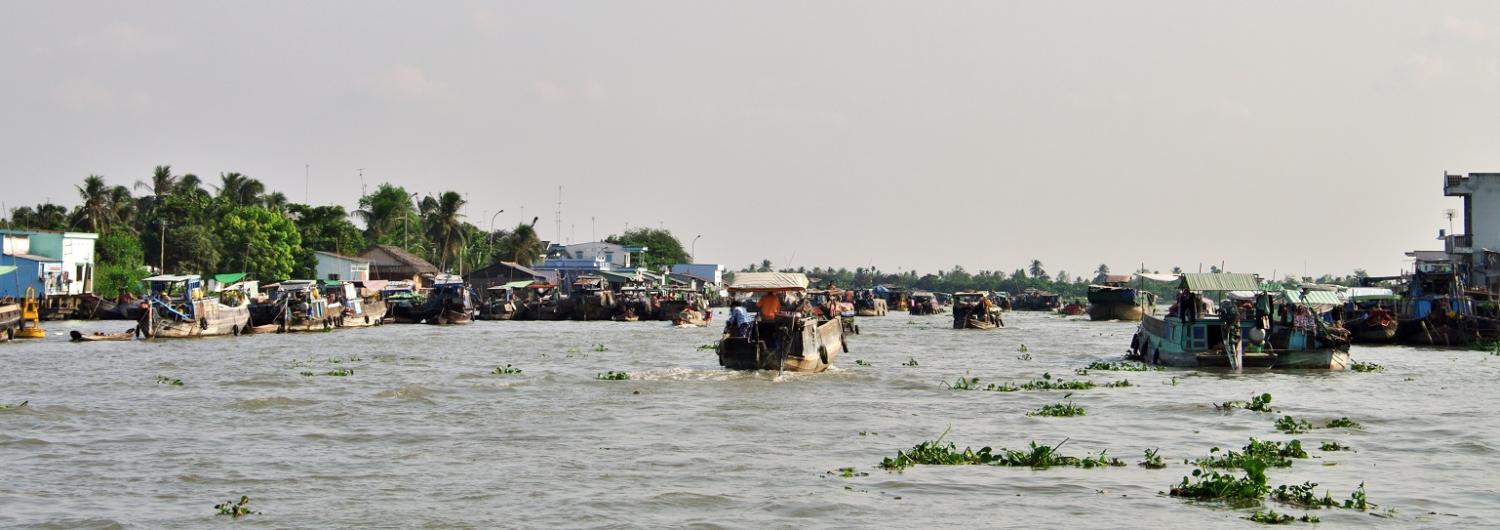Prime Minister Hun Sen's decision to drop Cambodia’s long-standing opposition to the Don Sahong dam in Laos did not come as a complete surprise. After all, the project will benefit China - the dam will be built by Sino-Hydro corporation and will advance China's interests on the Lower Mekong - and lately Cambodia's interests are increasingly likely to dovetail with China's*.
'After Cambodia inspected the situation, it (Cambodia) does not have a problem with this development project,' Hun Sen wrote last week on his Facebook page, thanking Laos for its pledge to sell low-cost electricity to Cambodian provinces located near the dam.
Many doubt the sudden support for the dam was related primarily to lower electricity prices. It seems much more likely Hun Sen's endorsement was motivated by his appreciation for substantial aid packages that flowed from Beijing last year.
Certainly Hun Sen's backing flies in the face of dire warnings from NGOs and international scientists. They are concerned the dam will block one of the world’s most important fish migration channels and undermine food security, nutrition and health along the Mekong that plays such a key role in Cambodia’s economy. Some 18% of Cambodia’s GDP is based around fisheries and Cambodians' rate of protein intake from fish - 81.2 % - is one of the world's highest.
WWF Cambodia director Chith Sam Ath describes the planned dam as an 'ecological time bomb' that threatens the food security of 60 million people living in Mekong basin.
There have been many community and NGO protests against the project, including the one pictured in Cambodia's north-eastern province of Strung Tren (photo courtesy of WWF).

Back in 2012, it appeared the government and civil society were on the same page when Hun Sen and the Vietnamese prime minister jointly opposed the Xayaburi and the Don Sahong dams. This challenged Laos' plans to build 11 dams (most of which involved agreements with Chinese hydropower companies) and called for all dam-building to stop until trans-boundary environmental impacts were carried out. The Cambodian National Mekong Committee took these concerns to the Mekong River Commission, the consultative body that brings together Laos, Thailand, Cambodia and Vietnam. At an MRC forum on the Don Sahong dam in December 2014 the Cambodian delegation, together with Vietnam, criticised the project design and questioned the credibility of the fish mitigation plan. Laos, however, unmoved by protests and demands for more research, has unilaterally moved ahead with dam-building.
And in the meantime, Cambodia's views toward China have changed substantially. From being arch enemies in the 1980s, when Beijing backed the ousted Khmer Rouge regime, relations with Cambodia have come full circle in the last 15 years. The metamorphosis has won Cambodia the dubious reputation of China’s staunchest ally inside ASEAN. In return, Phnom Penh has benefited substantially from new aid and investment deals, much needed by its aid-dependent economy.
The clearest indication of the developing and interwoven ties between the two nations came last year after an arbitration tribunal in The Hague handed down its landmark ruling that found China has no historic claims to areas of the South China Sea. Three days after the ruling, China announced it would hand over almost $US600 million in aid to Cambodia.
Later that month, Cambodia blocked attempts at an ASEAN Foreign Ministers’ Meeting to issue a consensus statement that would have cited The Hague ruling on these hotly contested islands. China thanked the Phnom Penh delegation for its efforts. Other ASEAN members were infuriated, according to Ian Storey, a senior fellow at the Institute of Southeast Asian Studies in Singapore who is in no doubt that China has used Cambodia 'to scupper ASEAN unity on several occasions'. Storey says: 'Cambodia isn’t making itself popular with its fellow ASEAN members by doing China’s bidding'.
Now Hun Sen’s decision to back the Don Sahong dam is more good news for China. Given Laos and Thailand are already in China's camp, Vietnam appears to be the only the only riparian nation that might possibly challenge China’s control, and the surge of dam-building on the Lower Mekong that is likely to follow.
The shift in Cambodia's position has also underlined the weakness of the Mekong River Commission, established in 1995 to promote good governance and equitable sharing of water resources. In March last year, recognising the Commission's impotency, China moved to fill the vacuum by launching its Lancang–Mekong Cooperation Mechanism. This has put China in the driving seat of water resources management of the Mekong, with an emphasis squarely on economic development. Climate change and ecology safeguards barely rate.
It appears China has emerged triumphant not only in the South China Sea, but has also succeeded in wresting control over the water resources of the mighty Mekong.
*This sentence was clarified shortly after first posting
